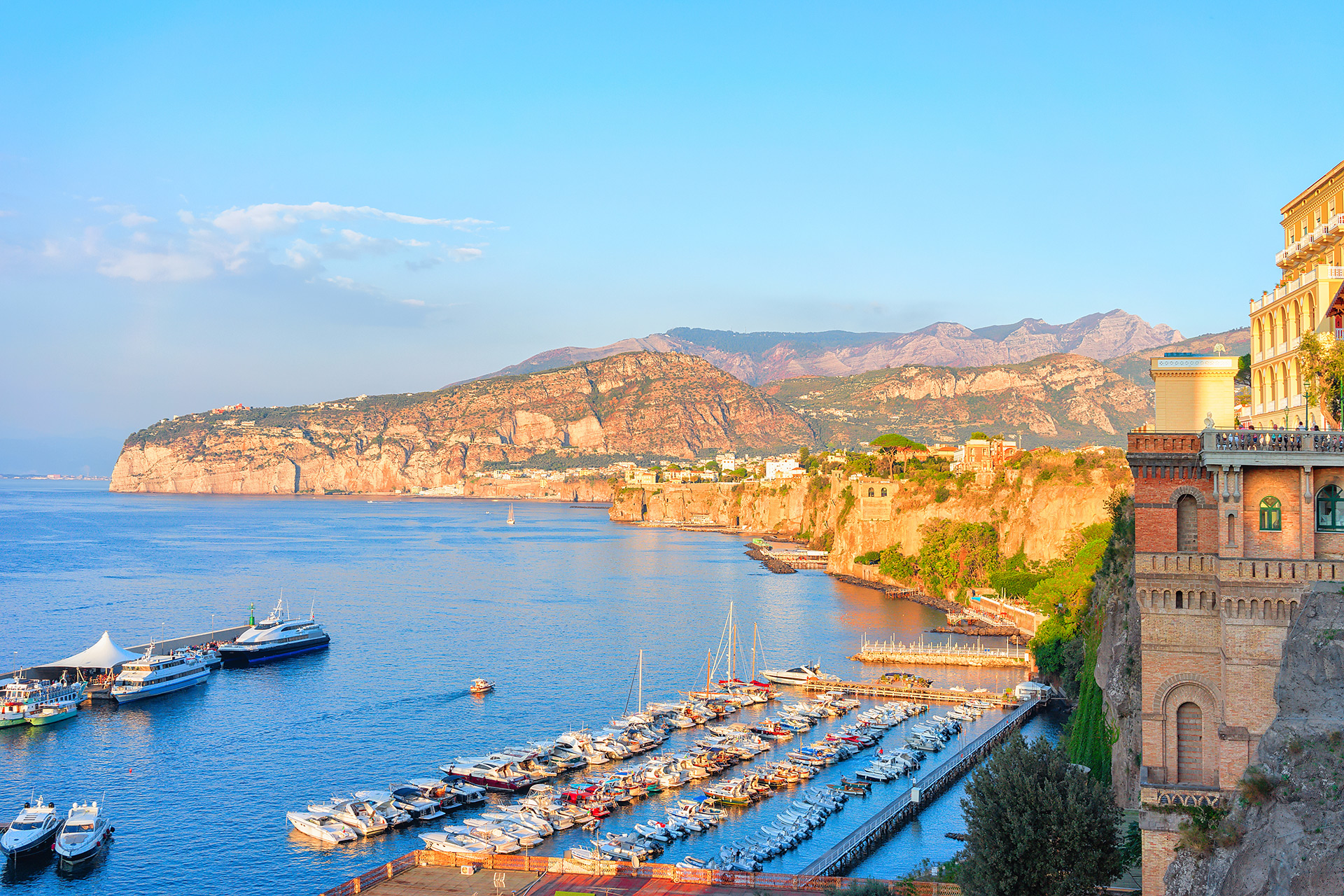

The origins of Sorrento mingle between history and legend. According to tradition, it seems that the name "Sorrentum " derives from the myth of the sirens whose singing lured sailors and made them lose their way. However, legend has it that Ulysses and his companions escaped by plugging their ears with wax. The sirens, so humbled, were turned into rocks, known today as "Li Galli", which are located in the Gulf of Salerno, at the beginning of the Amalfi Drive. Founded by the Phoenicians, Sorrento was first a Greek and then a Roman colony. It became a municipality and a favourite patrician resort during the Imperial Age.
After the fall of the Roman Empire, Sorrento came under Byzantine rule and managed to remain almost independent with its government of dukes. It remained a free dukedom until the 9th century. During this period, the economy was based on construction, shipbuilding, maritime commerce and above all agriculture. In the Middle Ages, Sorrento had a period of relative freedom, ruled by dukes and bishops under both Gothic and Byzantine control. In the mid 12th century, it was conquered by the Normans and came under the dominion of the Kingdom of Naples. However, it still managed to retain aristocratic privileges and control of some of the surrounding towns.
In 1558 Sorrento was ruthlessly sacked by the Turks, due to the betrayal of a servant from one of the noble families. The locals, then, reconstructed high walls ìsurrounding the town, following the ancient Roman layout, and built look-out towers along the coast.
In 1648 the neighbouring villages revolted as they wanted autonomy and Sorrento was besieged for 14 months, finally being liberated by the troops of the Duke of Seiano.
With the Bourbons in Naples, maritime activity and tuna fishing in Sorrento intensified until the 20th century. In 1799 it joined the Neapolitan (Parthenopean) Republic. With the return of the Bourbons to Naples, the "Sedili Nobiliari" (or Noble Seats) were abolished.
From the 18th century, Sorrento became a holiday resort, particularly popular with Neapolitan noble families. After the Unification of Italy, Sorrento came under the "Risanamento Edilizio" (Building Reformation), which changed its old urban structure.
In the fascist period, the independent town councils of S. Agnello, Piano di Sorrento and Meta were abolished and came under Sorrento until the post-war period. Sorrento has continued to be a popular holiday resort, attracting many famous writers, poets and musicians due to its particular charm.
The famous Italian poet Torquato Tasso was born in Sorrento on 11th March 1544.Torquato Tasso's original writings can be seen at the Correale Museum, and his statue can be found in the small gardens of the Tasso Square (Piazza Tasso), Sorrento's main square.